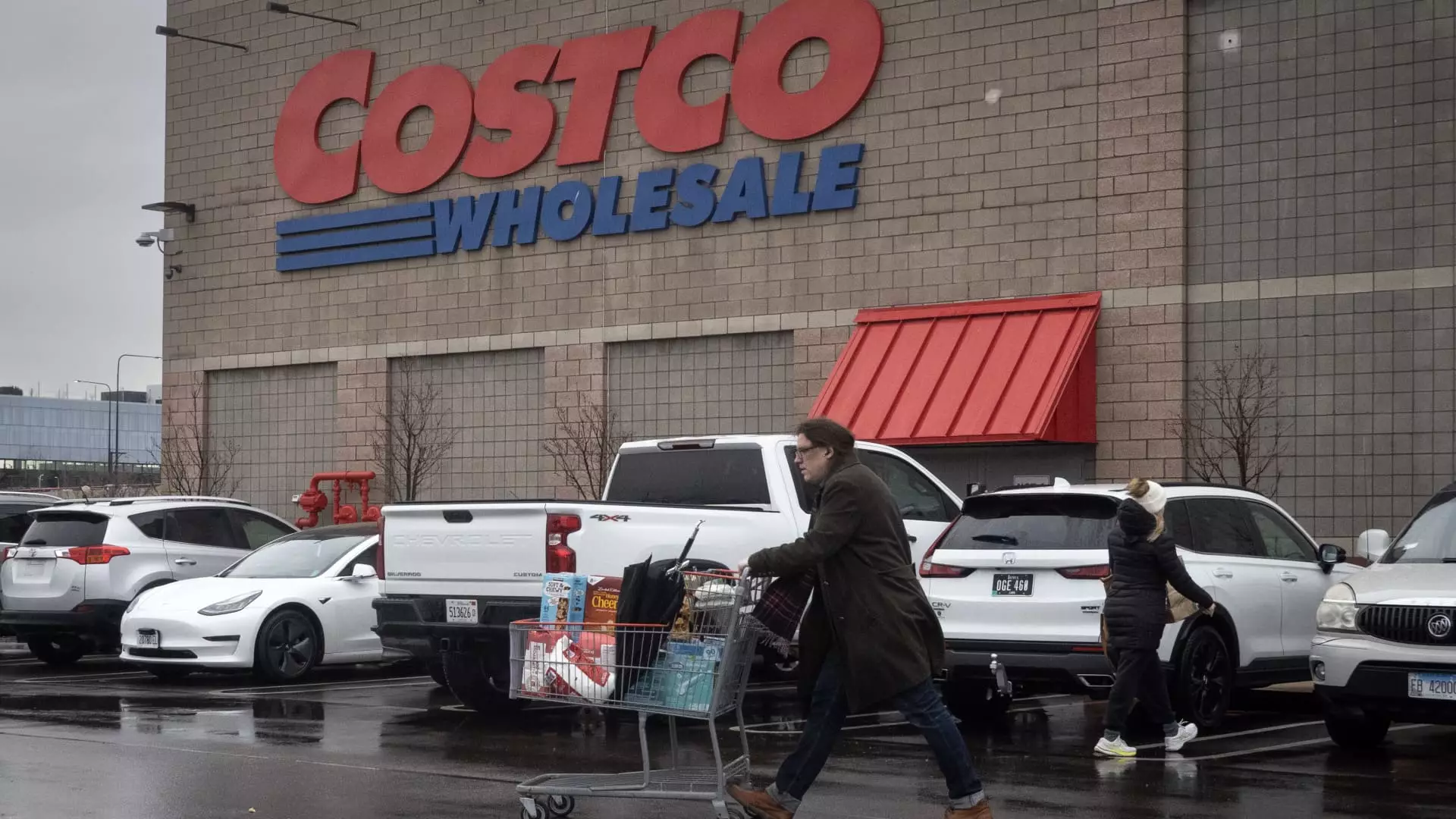Costco, a perennial favorite among consumers and investors alike, recently reported its second-quarter results, revealing a mixed bag that invites both scrutiny and optimism. While the company may have missed earnings expectations, its revenue exceeded forecasts—an interesting juxtaposition that captivates attention amid an unpredictable economic landscape. The core message conveyed by CEO Ron Vachris—highlighting the challenges posed by tariffs and the evolving consumer behavior—underscores the complex dynamics of retail in today’s world.
Revenue Growth Amid Uncertain Market Conditions
In an era where economic stability feels increasingly elusive, Costco’s reported revenue of $63.72 billion marks a compelling 9% increase from the same quarter last year. Compared to the average expectations of analysts, this outcome springs forth as a beacon of achievement, showcasing Costco’s ability to thrive even when external conditions are less than favorable. The surge in total sales is even more intriguing, illustrating a net sales increase of 9.1%, suggesting not merely survival in an unpredictable environment but a commendable growth trajectory.
However, amidst this enthusiasm, it would be naïve to overlook the challenges facing Costco. The miss on earnings per share (EPS), which came in at $4.02 against expectations of $4.11, poses a more complex narrative. This discrepancy indicates that while sales are burgeoning, profitability is experiencing friction. It raises pertinent questions: Is Costco’s business model under pressure from rising costs? Are external factors like tariffs squeezing margins to the point where they impact overall earnings? The answers to these questions could have significant ramifications for Costco’s future strategies and operations.
Tariffs and Their Ripple Effects
Tariffs and their implications have become a pressing issue in the retail sector, and Costco is no exception. The company’s reliance on imports—as acknowledged by Vachris—puts it squarely at the mercy of international trade policies. With one third of its U.S. sales deriving from imported goods, the potential for cost increases looms large. Vachris noted that less than half of these imports come from Canada, Mexico, and China, indicating a diverse supply chain; however, any disruption can still be seismic.
The recent announcements of tariff hikes, particularly a 25% surge on goods from Mexico and Canada, add urgency to these concerns. This development not only jeopardizes Costco’s profit margins but may also prompt price increases that could reverberate throughout the retail landscape. Other players in the market, such as Best Buy and Target, have already conveyed similar warnings, indicating a growing consensus that consumer prices may be set to rise, driven by these external economic pressures.
Yet, in this maelstrom of tariff-induced uncertainty, Costco’s commitment to mitigating these impacts is worth noting. Vachris reassured stakeholders that the company is leveraging its robust supplier relationships and global buying power to cushion the blow for consumers. This proactive approach signals optimistic resilience, but it invites skepticism: can such strategies truly safeguard cost efficiency in the long run?
Consumer Behavior: The Resilient Yet Selective Shopper
The article closely examined consumer behavior trends as they relate to the evolving economic climate. While it is encouraging that Costco members continue to demonstrate a willingness to spend, albeit on selective products, this dynamism brings with it an essential caveat. The emphasis on quality, value, and new offerings highlights shifting consumer priorities that have become pronounced in today’s inflationary environment.
CFO Gary Millerchip’s reflections on sales patterns suggest a cautious consumer psyche; these are not shoppers whose wallets open indiscriminately. The inclination toward more cost-effective options, particularly seen in meat purchases, demonstrates a notable shift in priorities. Today’s members are savvy, strategic, and increasingly discerning—an adaptation driven by not just their personal aspirations but also external economic pressures.
Interestingly, Costco has seen solid performance across specific categories like fresh foods, furniture, and even luxury items like gold and jewelry, which experienced double-digit growth. This juxtaposition of premium and everyday items highlights the nuanced landscape of modern retail: consumers are no longer segmented solely by income brackets but are also defined by their immediate needs and perceptions of value.
While Costco’s latest quarterly results are a tapestry woven with both triumphs and tribulations, one thing remains clear: the retail landscape is evolving. The company stands resilient yet wary, intent on navigating the myriad challenges and seizing the myriad opportunities that lie just ahead. In a world where economic norms frequently get upended, Costco’s ability to adapt will be the true litmus test for its future success.

